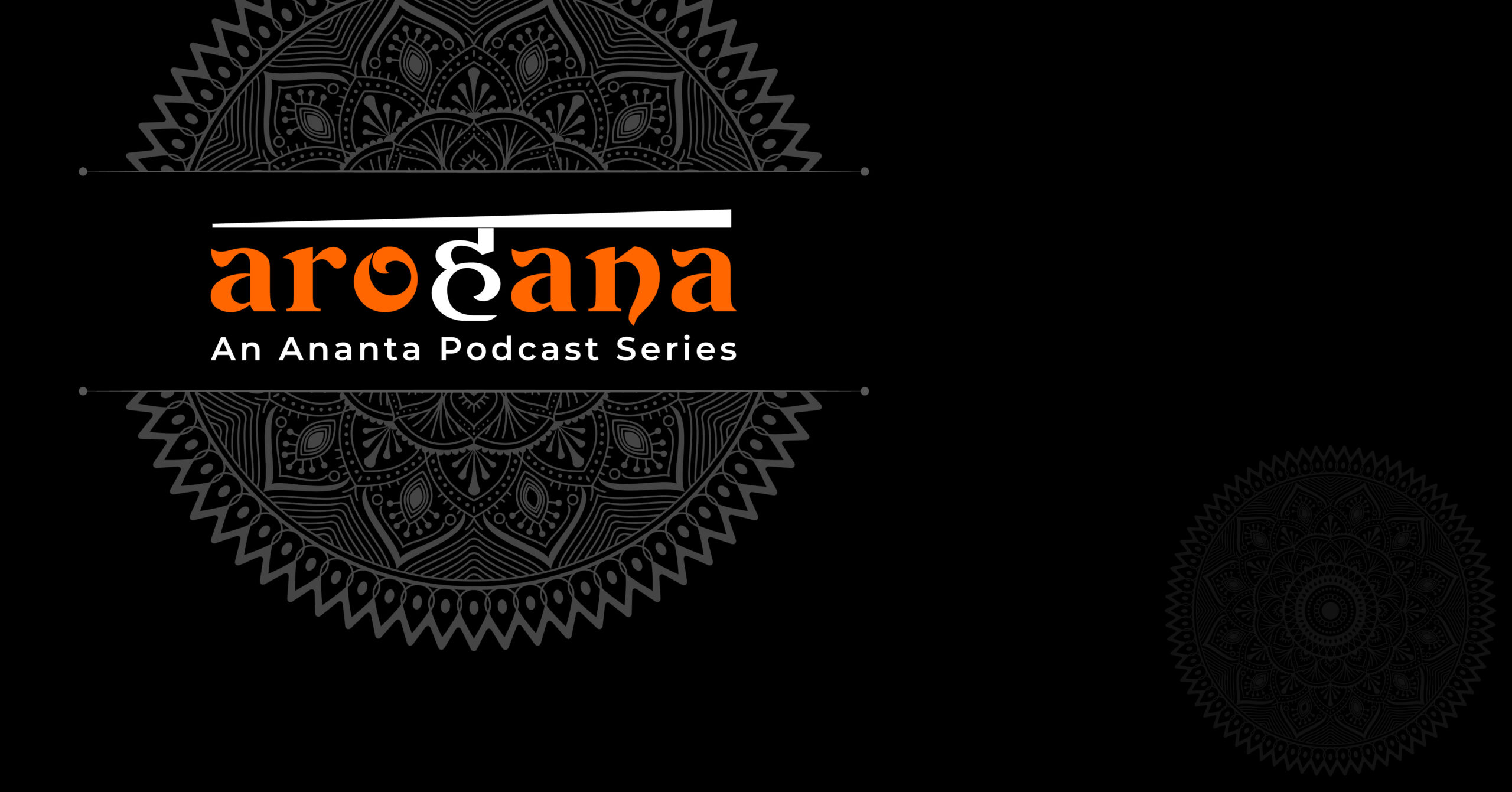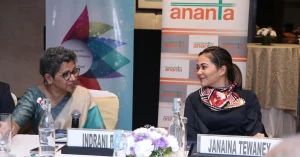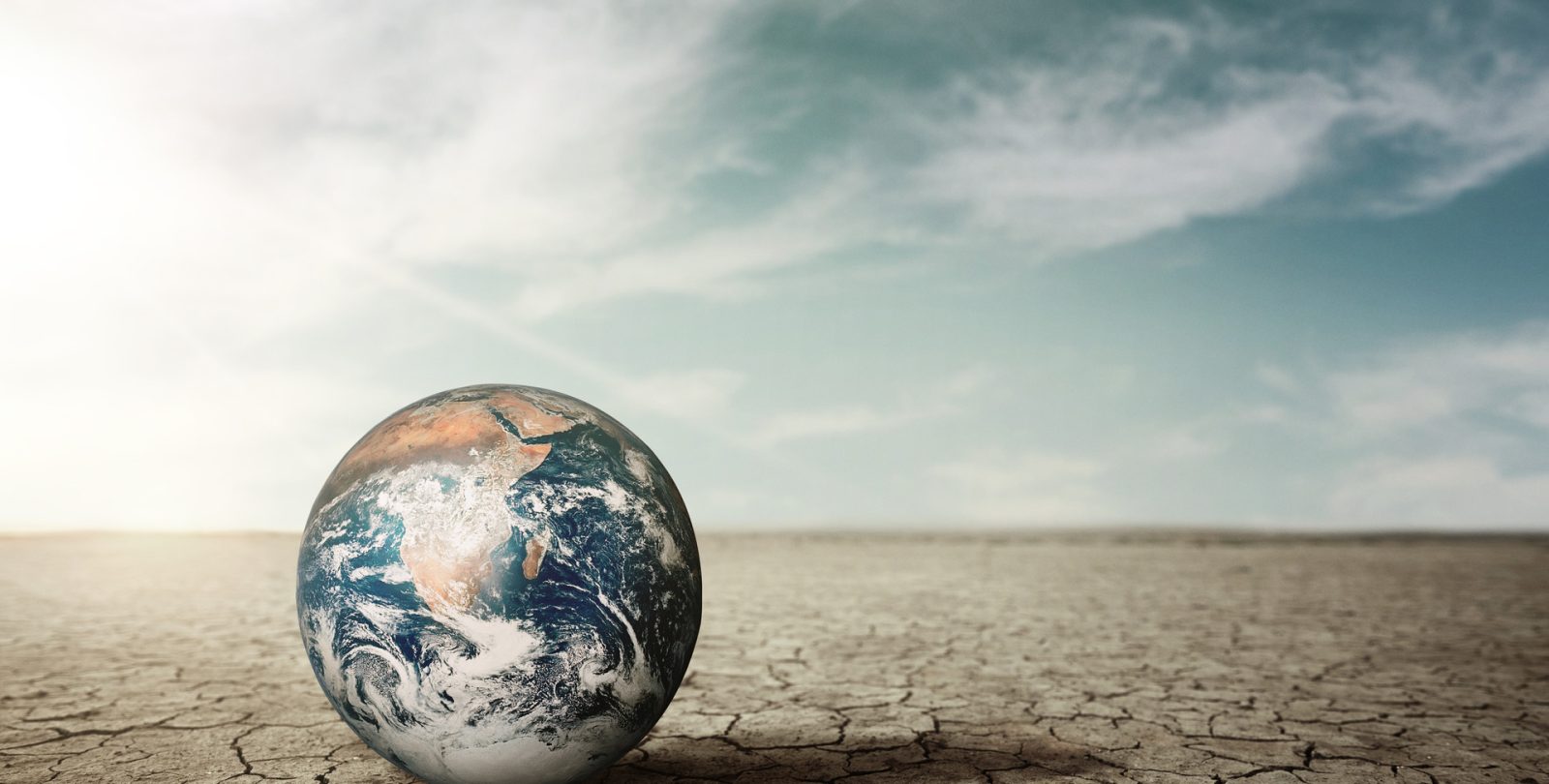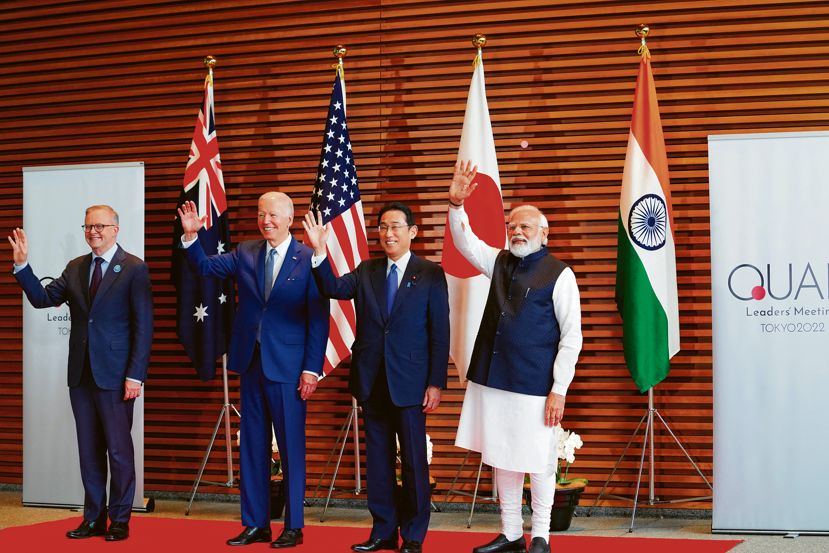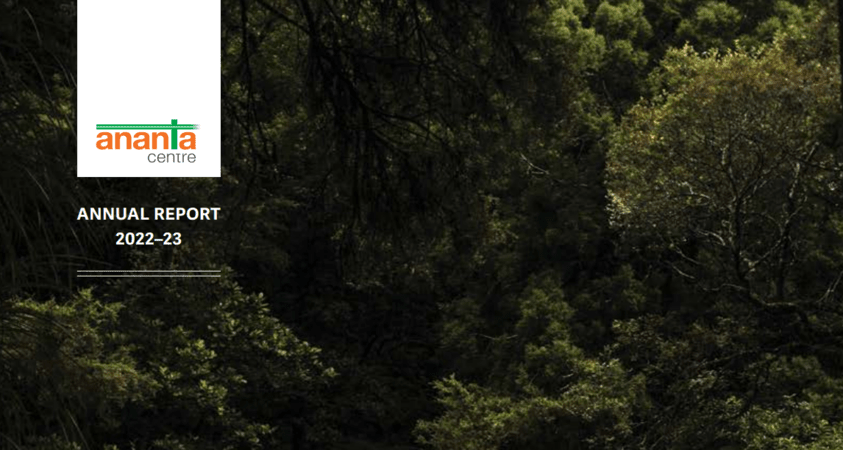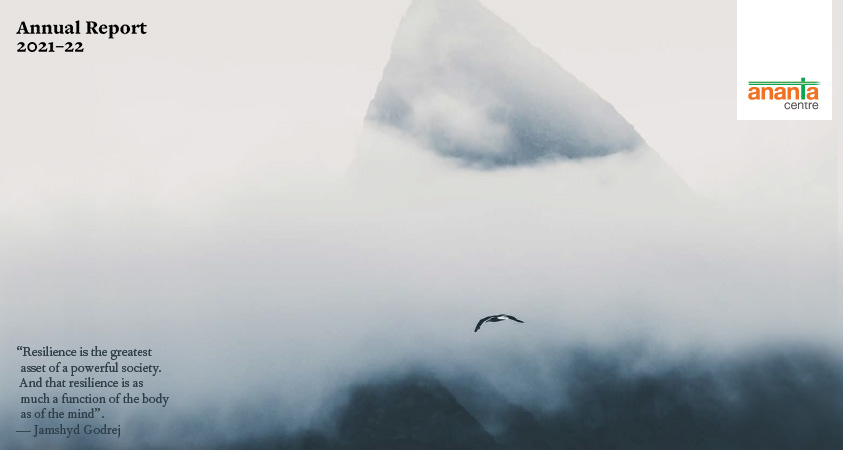IA) Political Developments: Pan-Regional and Global Issues
WANA Regional Security and Terrorism
With the approaching Islamic holy month of Ramadhan, the desperately needed ceasefire in the Gaza conflict remained elusive during the month largely due to maximalist and obdurate postures adopted by the two antagonists. Two rounds of indirect negotiations, among the intelligence chiefs of Egypt, Qatar and the US, were held in Cairo (second week) and Paris (fourth week) during the month. Hamas sought a permanent ceasefire and Israeli commitment to withdraw from Gaza before any commitment to the release of Israeli hostages. Hamas even refused to provide a list of Israeli hostages under its captivity. Israel and reiterated its vow to finish off Hamas as a military and political force. Perhaps as a pressure tactic, Israel repeatedly threatened to launch an assault on Rafah, the last region of Gaza not yet under its control, but teeming with nearly a million displaced Gazans. President Biden publicly warned PM Netanyahu against attacking Rafah. On Feb 7, Reuters reported a Hamas proposal for a ceasefire of 4-1/2 months, during which all hostages would go free, Israel would withdraw its troops from Gaza and an agreement would be reached on an end to the war. Israel turned down this proposal out of hand as “delusional.” After initially joining the ceasefire negotiations at Cairo, the Israeli team rejected the Hamas conditions and withdrew on Feb 14, leading to their collapse. On Feb 17, the Qatari Prime Minister described the ceasefire negotiations as “not very promising in recent days.” Israel’s Mossad chief rejoined the negotiations on Feb 23 in Paris. Despite some forward movement, the negotiations remained inconclusive till the end of the month.
Militarily, the IDF-Hamas conflict ran into its fifth month on Feb 7 metamorphosing into a stand-off and a war of attrition. On March 1, the Israel Defence Force (IDF) claimed to have killed 13,000 Palestinian fighters since the beginning of the ground offensive in Gaza. Although this figure was a third of the initial total strength of Hamas fighters at 40,000, Israeli leaders, including Prime Minister Benyamin Netanyahu claimed on Feb 5 while visiting his troops in Gaza that more than half of Hamas’s fighting force was either killed or wounded. has been put out of action. On Feb 8, an IDF source claimed to have demolished the Khan Younis brigade, Hamas’ most powerful.
Gaza’s official death toll from the Israeli military campaign crossed the 30,000 mark on Feb 29. Most horrifically, more than 112 Gazan civilians were killed and over 280 wounded on Feb 29 as IDF allegedly opened fire on a crowd waiting for food aid delivery near Gaza City. The act was widely condemned by the international community including the Biden administration. On Feb 27 the U.N. Office for the Coordination of Humanitarian Affairs informed the UN Security Council that at least 576,000 people in Gaza – one-quarter of the population – were one step away from famine. To deflect the mounting global concerns about the deteriorating humanitarian situation in Gaza, on Feb 22 Israel proposed humanitarian pockets in Gaza. Satellite imagery showed Egyptian authorities preparing a contiguous area on the Egyptian side of the border with arrangements to shelter Gazan refugees in case of Israeli assault on Rafah. Nevertheless, the Egyptian foreign minister on Feb 17 asserted that while the transborder displacement of Gazans (to Egypt) was unacceptable, Cairo would deal with the situation in a humane manner. On Feb 16, Hamas cryptically declared that there were many losses among the Israeli hostages. Israel, on its own, said officially on Feb 6 that 31 of the remaining hostages held in Gaza had been pronounced dead. On Feb 12, IDF was able to free two Israeli-Argentinian hostages held by Hamas in Rafah in a ferocious rescue operation that killed 74 Palestinians.
With the beginning of the end of the Gaza conflict approaching, Israeli polity was increasingly focused on a longer-term solution to the Palestine issue. The extreme right-wing government bristled at the mounting international pressure, including from US President Joe Biden, in the wake of the horrific toll of the Gaza conflict for a “two-state solution” envisaging a sovereign Palestinian state, including Gaza co-existing as a neighbour. On Feb 18, the Israeli cabinet issued a “declaratory decision” unanimously rejecting Palestinian statehood. It stated: “Israel utterly rejects international diktats regarding a permanent settlement with the Palestinians. A settlement, if it is to be reached, will come about solely through direct negotiations between the parties, without preconditions. Israel will continue to oppose unilateral recognition of a Palestinian state.” The motion added. “Such recognition in the wake of the October 7 massacre would be a massive and unprecedented reward to terrorism and would foil any future peace settlement.” On Feb 21, the Knesset also backed a government motion, with 99 votes out of 120 in its favour, rejecting the unilateral recognition of the Palestinian state. On Feb 22, PM Netanyahu lays out the Israeli government’s plan Gaza for after the war. According to the knowledgeable circles, it comprised of the following broad features: (a) Palestinians with no links to armed groups would run Gaza. It made no mention of Palestine Authority; (b) Israel would control the security of Gaza indefinitely; (c) It envisages a “demilitarised” Gaza, with Israel being responsible for removing all military capability beyond that necessary for public order. Israel would also maintain security control over the entire area west of Jordan from land, sea and air; (d) There would be a “Southern Closure” on the territory’s border with Egypt to prevent smuggling; (e) “De-radicalisation” programmes would be promoted in all religious, educational and welfare institutions.
A spokesman for the PA president, however, said PM Netanyahu’s plan was doomed to fail. He called for, instead, steps taken to create an independent and sovereign Palestinian state as a part of the two-state solution to the problem. (Further Reading: “U.S., Arab nations plan for postwar Gaza, timeline for Palestinian state”, Washington Post, Feb 14.)
Despite Israeli pre-occupations with Hamas and Hezbollah, it persisted with an iron-fist policy in the Occupied West Bank (OWB) with sporadic raids on potential hotbeds of Palestinian militancy.
For details on the Israel-Hezbollah tensions: Please see the para on Lebanon.
For the Houthi missile attacks on Israel and the Red Sea area: Please see the para onYemen.
WANA and Multilateral Diplomacy:
The UN Security Council continued to be deadlocked over a resolution on the Israel-Hamas conflict. Thus, on Feb 20, the US cast a veto, its third over the conflict, on the Algerian draft resolution over the call for an immediate ceasefire in Gaza. The vote was 13-1-1 with Britain abstaining.
The UN executive branch continued to raise alarm at the loss of life and property in Gaza and lament the lack of concerted action. The UN Secretary-General said on Feb 26 that the deadlocks on Gaza and Ukraine had damaged the UN authority. Earlier on Feb 7, in an address to the UN General Assembly, he warned that the world is entering into an “age of chaos” as the UN Security Council remains sharply divided over Israel’s war on Gaza. In a statement on Feb 23, the UN Human Rights commissioner deplored the impunity of Gaza war combatants. Earlier on Feb 5, the UNSG appointed an independent panel aimed at an investigation to “assess whether the agency is doing everything within its power to ensure neutrality and to respond to allegations of serious breaches when they are made”. The aid agency has been under fire over accusations by Israel that 12 of its staff members were involved in the Hamas attacks on Israel on October 7. More than a dozen countries – including the US, Germany, the UK and Sweden – have suspended funding to the agency.
Spurred by the January 26 interim ruling by the International Court of Justice on the South African reference alleging Israel committing genocide in Gaza, several other references were made during the month under review. On Feb 13, South Africa asked the ICJ to rule if the Israeli threat of an assault on Rafah needed additional emergency measures to protect the Palestinians’ rights. Three days later, the ICJ ruled that no such measures were required. On Feb 19, South Africa joined by the Palestine Authority called upon the ICJ to declare the Israeli occupation of the Palestinian territories since 1967 as illegal. In the meantime, on Feb 19, the ICJ commenced six days of hearings on the UN General Assembly’s 2022 reference for an advisory, or non-binding, opinion on the Israeli occupation. A record 52 countries were to present their arguments on this contentious issue. Although ICJ rulings and advisories are non-binding, these have, in ICJ’s words, “great legal weight and moral authority.”
On Feb 19, 26 European Union member states (ex. Hungary) warned Israel against undertaking a catastrophic military assault on Rafah in Gaza.
The G20 Foreign Ministers’ meeting in Brazil on Feb 22 was nearly unanimous in their support for a two-state solution as the only path to peace in the Israeli-Palestinian conflict.
On Feb 20, the World Food Programme paused the deliveries of food aid to northern Gaza until conditions in the Palestinian enclave allow for safe distribution.
A two-day meeting to discuss an array of issues facing Afghanistan was held in Doha on Feb 18-19 bringing together member states and international envoys. However, the Taliban didn’t attend because its pre-conditions tantamounting to diplomatic recognition, were unmet.
WANA and the United States:
During the month under review, the Biden administration broke several diplomatic and military shibboleths it had long held in the West Asia region. Diplomatically, the US diplomacy stopped finessing between the humanitarian “pause” and the “ceasefire” which had made it veto thrice the resolutions on the Gaza crisis. Washington was increasingly keen to put in place a ceasefire in Gaza before Ramadhan and announced more substantial plans for bringing succour to Gaza’s citizens desperate for food and healthcare. It also reverted to the pre-Trump era stance of regarding the Israeli settlements in Occupied Palestinian Territories as “inconsistent with the international law.” There were also frequent reports in the US media that President Biden had not spoken with Israeli PM Netanyahu for nearly a month. Moreover, there were frequent leaks about Washington contemplating reduction or delay in supplying the inputs needed for Israel to be able to wage its military campaign in Gaza. At the same time, WSJ revealed on Feb 16 that the Biden administration was preparing to send bombs and other weapons to Israel even as the U.S. pushes for a ceasefire in Gaza. President Biden’s bid to seek a second term also made him sensitive to the democratic party primaries voters’ growing perception of the White House’s helplessness in the face of Israeli resolve to pursue its war aims in Gaza ignoring the threat of humongous collateral damage. While the President prevailed in the primary of the swing state of Michigan on Feb 28, his campaign faced noticeable apathy from black and Arab-American voters.
Militarily, the US crossed the Rubicon in the region by initiating an intense bombing campaign against pro-Iran non-state actors such as Houthis and motley Shia groups in Syria and Iraq. On Feb 3, the US carried out air and missile attacks on 85 targets linked to Iran’s Islamic Revolutionary Guards Corps (IRGC) and its allied Shia militias in Iraq and Syria. The attacks, which included the use of long-range B-1 bombers flown from the US, killed 40 persons. These were in retaliation for the death of three US servicemen in a drone attack on Tower-22 base on Jan 28. On Feb 27, a high-ranking Pentagon official informed the Senate foreign relations sub-committee that the US had struck 230 targets in Yemen following Houthi-led attacks against shipping in the Red Sea.
President Joe Biden received Jordan’s King Abdullah II at the White House on Feb 13.
On Feb 8 and 23, the US sanctioned 3 and 1 entities in the UAE for violating its Russia-specific sanctions. On Feb 10, it sanctioned six IRGC officials held responsible for the cyber-attacks on American water plants late last year.
Muhammad Pahlawan, a Pakistani national, captain, and three crew members of a dhow were detained by the US authorities on Feb 15 who charged them for attempting to smuggle a warhead and other weapons from Iran to the Houthi militia of Yemen. The boat was seized by the US Central Command on Jan 11 in the Gulf of Aden.
WANA and Pakistan:
On Feb 23, Pakistan’s Cabinet Committee on Energy approved the government funding to start the construction of an 80 kms segment of the 800 kms natural gas pipeline from the Iranian border to Pakistan’s port city of Gwadar. The move, justified by Islamabad as needed to meet the country’s energy requirements faces challenges in terms of both Pakistan’s dire economic situation and the US economic sanctions on Iran’s oil and gas exports.
WANA Countries and BRICS:
On Feb 1, Reuters quoted an unnamed Saudi source as saying “Saudi Arabia has not yet responded to the invitation to join BRICS. It is still under consideration.”
IB) Political Developments
Israel
On Feb 20, a right-wing Israeli Minister issued a statement saying while the safe return of the hostages was “very important”, but that they could not be released “at any cost”. However, an opinion poll released earlier on Feb 8, found 51% of respondents believe recovering the hostages should be the main goal of the war, while 36% said it should be toppling Hamas. This widening divide between ruling hardliners harping on a military solution and more moderate public opinion spurred anti-Netanyahu demonstrators.
In the Israeli municipal elections held on Feb 29, the right-wing parties made impressive gains – indicating the continuing groundswell in their favour after Oct 7.
Palestine Authority:
Palestine Authority President Mahmoud Abbas visited Qatar on Feb 11 to discuss the ceasefire in Gaza with Emir Tamim bin Hammad Al-Thani.
Palestinian Prime Minister Mohammad Shtayyeh announced his resignation on Feb 26 without assigning any specific reason. While accepting the resignation, President Mahmoud Abbas asked Mr Shtayyeh to continue in a caretaker capacity. The moves came amidst the US and Western pressures to revamp the Palestine Authority to enable it to lead the new political structure to govern Gaza after the conflict.
The resignation was followed by the Russia-sponsored 3-day talks among nearly a dozen Palestinian factions including the representatives of Hamas, Islamic Jihad and the Fatah began on Feb 29 in Moscow. These concluded on March 2 with the participants agreeing that “our meetings will continue in the upcoming rounds of dialogue to reach a comprehensive national unity that includes all Palestinian forces and factions in the framework of the Palestinian Liberation Organization, the sole legitimate representative of the Palestinian people.” Hamas had previously been an outlier to the PLO structure and called for the destruction of the state of Israel.
On Feb 18 Norway agreed to help facilitate the transfer of tax funds earmarked for the Palestinian Authority (PA), collected by Israel, that were frozen since the Oct 7 attack. The temporary solution will allow payments to resume and prevent a financial collapse for the PA, enabling it to pay salaries and provide essential services such as schools and healthcare. However, Norway shall withhold the funds earmarked for Gaza until a new post-conflict political structure is put in place acceptable to Israel. According to this interim arrangement, Norway transferred $114 mn to PA on Feb 29.
On Feb 29, Israel appropriated several tracts of land totalling 652 acres to be a part of the Maale Adumim settlement, east of Jerusalem. The move, denounced by the PA President’s office as illegal, came within days of the statement by the US Secretary of State Antony Blinken saying that West Bank settlements were deemed “inconsistent with international law.”
Lebanon:
The IDF and Hezbollah continued to exchange fire across the Lebanon-Israel border through the month under review with the initiative mostly with the former and the Shia militia in face-saving reaction mode. Thus, following a targeted air attack on Feb 14 that killed ten people including the commander of Hezbollah’s elite Radwan unit, the Shia militia retaliated by firing a barrage of rockets at an Israeli border township. On Feb 19, Israeli airstrikes targeted a Hezbollah weapon depot in South Lebanon. On Feb 26, Hezbollah shot down an Israeli drone using a surface-to-air missile – a first in this conflict. Israel retaliated by launching several airstrikes at Hezbollah’s air defences in the Bekaa Valley, their deepest such action so far. In turn, Hezbollah fired nearly 60 missiles at an IDF headquarters in the Israeli-occupied Golan Heights. Israeli strikes since October have killed some 50 civilians in Lebanon, in addition to some 200 Hezbollah fighters. Attacks from Lebanon into Israel have killed a dozen Israeli troops and five civilians. However, through this cycle of fighting, the two antagonists took care to avoid a point of no return.
In a briefing on Feb 3, Israel’s chief military spokesperson provided rare details about the extent of IDF operations against Hezbollah since Oct 7. He claimed that Israeli forces have attacked 34,000 Hezbollah targets in Lebanon, including 120 border surveillance outposts, 40 caches of missiles and other weaponry and more than 40 command centres. He put the number of militiamen killed at more than 200. He also added that IDF had struck more than 50 targets in Syria linked to the Iranian-backed Lebanese movement Hezbollah. Hagari said Israel had deployed three army divisions along its side of the Lebanese border since the Gaza war.
Yemen:
The Ansar Allah (popularly called al-Houthis) militia continued its sporadic attacks on the merchant ships transiting through the Baab al-Mandeb strait, both in the southern Red Sea and the Gulf of Aden. Beginning Nov 17 till March 7, the Houthis attacked nearly 40 ships mainly using drones and anti-ship missiles. While they claimed the attacks were limited to the ships connected with Israel, the US and the UK, some of their victims have no such links. The Houthis portrayed their harassment of international shipping as aimed at supporting Hamas militia fighting Israel in Gaza. Although the US and the UK, leading navies of the “Operation Prosperity Guardian” have taken defensive, pre-emptive and retaliatory military actions to degrade Houthis capabilities to launch such attacks, these have had no ostensible success. As a result, the maritime trade through the Bab al-Mandeb choke-point, normally around 12% of the global trade, has fallen by nearly two-thirds and the ships are being forced to take a longer journey around the Cape of Good Hope. A Houthi attack on the freighter Rubymar on Feb 18 caused significant damage to the ship and an 18-mile (29-km) oil slick. The crew had to abandon the ship which eventually sank on March 3 with the cargo of 41,000 tons of chemical fertiliser. Rubymar was the first ship to be sunk due to the hostilities in the Red Sea. On Feb 16, M/T Pollux, a Panamanian-flagged tanker carrying Russian crude oil bound for India was struck by a missile in the Red Sea, causing minor damage. The US and UK military actions against Houthi militia coastal and land-based assets were reported on Feb 8, 10, 18 and 24. On Feb 19, Houthis managed to shoot down a US Mq-9 drone near the port of Hodeida. On Feb 2, Israel announced that it had intercepted a Houthi missile aimed at Eilat. Reuters reported on Feb 7 that the War underwriters had raised the premiums they charge to U.S., British and Israeli firms by as high as 50% for ships transiting the Red Sea. Some other insurance providers were avoiding such business altogether. During the month, the European Union also launched a naval mission to the Red Sea “to restore and safeguard freedom of navigation”. The details were sketchy.
On the diplomatic front, discreet efforts, mainly by Oman, continued to manage the Houthi naval aggression without much success. To this end, the US special envoy on Yemen, the British Foreign Secretary, the Norwegian deputy foreign minister and the UN special envoy on Yemen separately visited Muscat in early February. In a major TV address on Feb 6, Houthi leader Abdulmalik al-Houthi threatened further escalation unless the Gaza war was stopped. Later on Feb 22, he delivered another TV address saying that the Houthis had introduced “submarine weapons” in their attacks. On the same day, Houthis issued their first two formal communications to the shipping industry and insurers putting a formalised ban on vessels linked to Israel, the US and the UK in the Red Sea, the Gulf of Aden and the Arabian Sea.
At a different level, there were signs of the Houthi militia leveraging its newly strident anti-Israel and anti-US profile and “successes” to its domestic and regional advantage. Their actions, putatively in support of Hamas, earned them greater national and regional respect and adherence than they have hitherto enjoyed. The Houthis claimed that they have recruited and trained more than 200,000 new fighters since the group began its actions in the Red Sea in support of Palestine in mid-November. Even as most observers thought the number was an exaggeration, they wondered if once the Red Sea crisis ends, the enhanced force level would prompt the Houthis to ignore the informal ceasefire on the ground and resume their territorial quest in central and south Yemen, particularly towards oil-rich Marib province.
On Feb 5, the Aden-based internationally recognised Yemeni government appointed Ahmed Awad bin Mubarak as the Prime Minister. He was hitherto the Foreign Minister and was known to be an anti-Houthi hardliner.
Iran:
Iran marked the 45th anniversary of the Islamic Revolution on Feb 11.
In a sensational exclusive on Feb 21, Reuters cited several unnamed but knowledgeable sources to reveal that Iran has provided Russia with around 400 powerful surface-to-surface ballistic missiles. These reportedly included many from the Fateh-110 family of short-range ballistic weapons, such as the Zolfaghar, a road-mobile missile capable of striking targets at a distance of between 300 and 700 km. Although Iran was known to have supplied drones to Russia earlier, this first-ever reported supply of missiles, if confirmed, would mark further deepening the military cooperation between the two countries, both under US sanctions. Reacting to the report the next day, the White House National Security spokesman warned Iran not to provide Russia with the ballistic missiles.
The IAEA Nuclear inspectors told diplomats on Feb 26 that Iran’s level of highly-enriched uranium has dropped 5% since November, compared with a 5% increase during the previous quarter. Although this reduction could ease some of the fear about Tehran pursuing a nuclear weapon, that still means the Islamic Republic possesses enough technical know-how and material to fuel several nuclear weapons within weeks, should it decide to pursue arms. Some observers regarded this as a ruse to distract attention, some others thought that Iran was keen to sell the lower enriched uranium for nuclear reactors prices of which have been rising of late as nuclear power stages a comeback. Earlier on Feb 19 IAEA Chief had asserted that the Iranian nuclear enrichment activity remained high.
Iranian Foreign Minister Amirabdollahian paid a day’s visit to Beirut on Feb 10 during which he met with Lebanon’s caretaker prime minister, foreign minister, speaker of parliament and Hezbollah head Sayyed Hassan Nasrallah. In a press interaction, he warned Israel against taking any steps towards a broader war against Lebanon, saying that would be Israeli Prime Minister Benjamin Netanyahu’s “last day.”
Turkey:
President Recep Tayyip Erdogan visited Abu Dhabi and Cairo on Feb 13-14. It was his first visit to Egypt in over a decade and was designed to mark full bilateral normalisation of ties which have been tense since 2013 when Gen el-Sisi overthrew the Muslim Brotherhood’s democratically elected government of President Mohammed Mursi supported by Turkey. In a sign of about turn, Erdogan offered to provide Turkish drones to Egypt. In the joint communique issued after the visit, the two sides demanded that Israel halt its threatened assault on Rafah.
During the Somali defence minister’s visit to Ankara in early February, Turkey and Somalia signed a defence and economic cooperation agreement. On Feb 22 Turkey said that it would provide maritime security support to Somalia to help the African country defend its territorial waters.
On Feb 2 Turkey’s central bank governor Hafize Gaye Erkan, the first woman in that capacity, resigned suddenly citing a need to protect her family amid a “reputation assassination.” Her replacement by her deputy Fatih Karahan two hours after her surprise resignation hinted at the Presidency being nonchalant about her departure after 8 months in the job. Both Erkan and her successor had a background in American banks.
On Feb 2 seven persons were arrested by Turkish police for suspicion of spying for Israel. Similarly, on Feb 20, 6 persons were detained for spying on Beijing’s behalf on the Turkey-based Uyghur community, the largest outside China’s restive Xinjiang province.
The maiden flight of TAI Kaan, Turkey’s 5th generation fighter plane prototype, took place on Feb 27.
Turkey’s Baykar announced on Feb 6 that it had commenced work on setting up a drone factory near Kyiv in war-torn Ukraine. On completion in 12 months, the factory would have the capacity to build 120 drones annually.
Sudan:
In a joint appeal, the concerned UN agencies called for $4.1 bn in funding to provide humanitarian aid for 17.4 mn people affected by the 10-month-old civil war in Sudan that has created one of the world’s ‘largest displacement and protection crises.’ The conflict has killed 12,000 people, according to UN figures, although the actual death toll is thought to be higher. More than 10 million people have been displaced. Earlier on Feb 2, the UN’s World Food Programme cited reports of people dying of starvation in Sudan.
On Feb 15, the Economist published an item about Ukrainian forces’ presence in Sudan in support of the Sudan Armed Forces war against the Rapid Support Force, backed by the former Wagner militia of Russia. (Further Reading: “Evidence mounts that Ukrainian forces are in Sudan” The Economist, Feb 15.)
Syria:
In an exclusive report on Feb 1, Reuters cited several unnamed sources to disclose that Iran’s Islamic Revolutionary Guards Corps (IRGC) have scaled back deployment of their senior officers in Syria due to a spate of deadly Israeli strikes. Instead, they are relying more on allied Shi’ite militia to preserve their sway there. Since December, Israeli strikes have killed more than half a dozen IRGC members, among them one of the Guards’ top intelligence generals. The reduction was also prompted by a need to avoid getting entangled in the threatened US retaliation after the Tower-22 drone attack killed three US servicemen on Jan 28. The report did not so far discern any impact of IRGC operatives’ departure from Syria on their operations in that country. It also cited sources as saying that the IRGC cadres were once again recruiting Shi’ite fighters from Afghanistan and Pakistan for deployment in Syria.
While no Jordanian airstrikes on the drug dealers’ hideouts in southern Syria were reported during the month, the Jordanian army claimed to have killed 5 drug smugglers in a border skirmish on Feb 18.
At least one protestor was killed in Druze-majority Sweida governorate in southern Syria on Feb 28. This was the first death in anti-government protest which began in August 2023.
Iraq:
Noting that there have been no attacks on the US military bases in Syria and Iraq since Feb 4, a Reuters report datelined Feb 18 attributed this pause to a Baghdad visit on Jan 27 by Esmail Qaani, Commander of Quds Force, the arm of Iran’s Revolutionary Guards that works with allied armed groups from Lebanon to Yemen. During his visit, which took place within 48 hours of the Tower-22 attack on Jan 25 killing 3 US military personnel, he met with Iran-allied groups in Iraq and persuaded them to stop attacking the US bases to avoid any expansion of the conflict. (Further Reading: “Iraqi armed groups dial down U.S. attacks on request of Iran commander”, Reuters, Feb 18.)
On Feb 7, a US airstrike killed an unnamed commander from Kataib Hezbollah, an Iran-backed armed group in Iraq blamed for attacking American troops in Iraq and Syria.
Saudi Arabia:
Ukrainian President Ukrainian President Volodymyr Zelenskyy visited Riyadh On Feb 27 for talks with Saudi Crown Prince Mohammed bin Salman (MbS). He was understood to have sought the good-office intervention of MbS for an end to the Russian invasion of Ukraine and the return of the POWs from Russia. MBS “affirmed the Kingdom’s keenness and support for all international endeavours and efforts aimed at resolving the Ukrainian-Russian crisis”. On the previous day, MBS also met with Russian State Duma Speaker Vyacheslav Volodin.
Following a meeting in Riyadh between MbS and the visiting US Secretary of State Anthony Blinken, the Saudi foreign ministry stated on Feb 7 “Kingdom has communicated its firm position to the U.S. administration that there will be no diplomatic relations with Israel unless an independent Palestinian state is recognized on the 1967 borders with East Jerusalem as its capital”. It also reiterated “its call to the permanent members of the U.N. Security Council that have not yet recognized the Palestinian state, to expedite the recognition of the Palestinian state on the 1967 borders, with East Jerusalem as its capital”.
On Feb 8, Saudi foreign minister Prince Faisal bin Farhan hosted a meeting in Riyadh with his counterparts from Egypt, Jordan, Qatar and the UAE to take a common position on how to end Israel’s war on Hamas a common position on how to end Israel’s war on Hamas discuss the Israel-Hamas conflict. A Saudi communique issued at the start of the gathering called for the removal of all obstacles to the entry of aid into the war-torn Gaza.
The World Defence Show (WDS2024) began in Riyadh on Feb 7 with China among the largest participants. In a sign of growing amity with the Kingdom, Iran also participated in the event for the first time. Saudi Arabia and South Korea signed a defence cooperation agreement on Feb 5 in Riyadh. WDS2024 framed the Kingdom being the world’s second-largest arms importer in 2019-23, receiving 8.4% of global arms imports in the period.
Egypt:
In a news conference with visiting Somali President Hassan Sheikh Mohamud on Jan 21, President Abdel Fattah el-Sisi said that Egypt will not allow any threat to Somalia or affect its security. He was referring to a memorandum of understanding signed on Jan 1 under which Ethiopia said it would consider recognising Somaliland’s independence in return for the access to port of Berbera. It would lease 20 km (12 miles) of coastland around the port of on the Gulf of Aden, for 50 years for military and commercial purposes. Somaliland declared independence from Somalia in 1991 but has not won recognition from any country. The port lease deal would be the realisation of sea access to landlocked Ethiopia but has enraged Somalia. Ethiopia rejected Egyptian criticism of the deal, saying it was merely a commercial agreement aimed at securing access to the sea and not an attempt to annex land.
Kuwait:
On Feb 15 Kuwait’s emir Sheikh Meshal al-Ahmad al-Sabah dissolved the parliament for “violation of the constitutional principles.” It’s the third time since June 2022 that the elected National Assembly is disbanded signifying continued political dysfunction that has plagued the country and stymied development for years, deterring foreign investment, thwarting fiscal reform and hindering efforts to diversify the oil-reliant economy.
Libya:
Deadly clashes erupted in Tripoli among “security groups” on Feb 17-18 resulting in 10 deaths. On Feb 21, the interior minister said that these heavily armed and equipped non-state militias had agreed to leave the capital “soon.”
A report in al-Jazeera on Feb 25 revealed that following the death of Yevgeny Prigozhin, founder and head of the Wagner militia, its overseas presence, now renamed the Expeditionary Corps, had been assigned to Russia’s military intelligence (GRU), specifically to General Andrei Averyanov. By current estimates, the Expeditionary Corps is thought to have some 800 “contractors” deployed in Libya, with a further 4,600 dispersed across sub-Saharan Africa. The report mentioned that the Expeditionary Corps maintained three air bases in Libya–in the oil basin of Sirte, al-Jufra in the interior, and Brak al-Shati. It stated that for the time being the Expeditionary Corps’ mandate of supporting Benghazi-based Libyan National Army led by Gen Khalifa Haftar remained unchanged. (Further Reading: “Under new general, Russia’s Wagner makes deeper inroads into Libya” Al-Jazeera, Feb 25.)
Tunisia:
Rachid Ghannouchi, 82, leader of the Ennahdha, and former speaker of parliament, was sentenced on Feb 8 to an additional three years’ imprisonment, for receiving foreign funding, illegal under Tunisian law. His son-in-law, former Foreign Minister Rafik Abdessalem was also sentenced on similar offences. Ghannouchi is already in jail since last year, having already been found guilty of “incitement” while his Rafik Abdessalam is abroad.
Somalia:
A statement by the International Rescue Committee on Feb 1 said that the Floods in the central Somalian region of Hiraan caused a surge in cholera with 980 cases reported in the first two weeks of 2024, 48$ higher than the year before. The majority of cases were in children under the age of five.
Qatar:
Qatar successfully defended their Asian Football Cup crown after beating Jordan 3-1 on Feb 10 in Doha.
The UAE:
On Feb 12 the United Arab Emirates launched a $200 mn fund to finance the development of sophisticated technology in developing nations. It is to be funded by the Abu Dhabi government and will be overseen by the Gulf state’s Advanced Technology Research Council (ATRC). It would open up technologies developed in the UAE to governments and organisations in poorer nations and would finance research projects. The solution would either be donated or sold to it at an affordable price.
Abu Dhabi emirate’s G42, an artificial intelligence firm, announced on Feb 12 its decision to divest all of its investments in China and end its physical presence in that country and has pledged to invest in key Western markets to assuage US concerns over the ties to Beijing.
II) Economic Developments
Oil & Gas Related Developments:
Global Issues:
The Brent futures for April delivery closed on Feb 29 at $83.62/barrel, having gained approximately 3.8% during the month under review largely due to the Red Sea disruptions and several supply-side hiccups. Many observers, however, regard the Atlantic basin’s undersupply due to the Red Sea crisis as only a temporary issue as the tankers taking a longer route around the Cape of Good Hope would eventually arrive at their destinations to ease the supply crunch. This diversion of the traffic through longer routes also resulted in a shortage of the oil tankers leading to even higher freight.
On Feb 1, the OPEC+ Joint Ministerial Monitoring Committee recommended sticking with 2.2 mbpd oil production cutbacks, in place since last November through this quarter to avert a glut and buoy prices. Separately, a Bloomberg survey projected that the OPEC output fell by 490,000 bpd on Jan 24 to 26.57 mbpd with about half the reduction coming from Iraq and Kuwait.
The suppliers’ group OPEC and the consumers’ body IEA continue to spar about the future of the oil market. OPEC’s Secretary General Haitham Al Ghais said on Feb 13 that global oil demand was “robust” and was likely to reach 116 mbpd by 2045. OPEC’s monthly bulletin maintained the global oil demand growth in 2024 by 2.25 mbpd, the figure unchanged from last month. Although the IEA also saw the demand rising this year, only 1.2mbpd. With OPEC+ production curtailed by 330,000 bpd and continuous growth of crude production outside this body, the IEA monthly bulletin foresaw the markets tethering on the brink of a surplus during 2024, putting a bearish hold on the commodity. The oil price decline during the past year did not dent the profits of the super-majors and the top five oil MNCs collectively declared their investor payouts for 2023 at $113.8 bn, 10% higher than 2022 when oil prices averaged above $100/barrel. The paradox is partially explained by higher margins on refined products and petrochemicals.
Country Specific Developments:
On Feb 25 Saad al-Kaabi, Qatar’s Minister of Energy and QatarEnergy chief announced a new expansion of its liquefied natural gas production that will add a further 16 mtpa to existing expansion plans, bringing the country’s total capacity to 142 mtpa by 2030 from 77 mtpa at present, representing an increase of 85% in production. The expansion plans are being pushed ahead despite a steep drop in global gas prices. Qatar’s unit cost of LNG production is as low as $0.3/mmBtu, less than a tenth of the global average. When completed, Qatar would be able to produce the equivalent of about 7.25 mbpd of crude. As most of the gas produced would be exported as LNG, Qatar would then essentially match the oil shipments from the region’s reigning energy giant, Saudi Arabia.
To avoid Red Sea troubles, Saudi Arabia leveraged its Trans Arabian Pipeline (TAP) to load its west-bound crude from the upper Red Sea oil terminal at Muajjiz near Yanbu.
After nearly a decade-long closure, Iraq reopened the Baiji refinery with an initial capacity of 150,000 bpd to be raised to 290,000 bpd in stages. PM Mohammed Shia al-Sudani said in the reopening ceremony on Feb 23 that Iraq aimed to reach self-sufficiency in oil derivatives by mid-next year. Earlier on Feb 12, the Iraqi Oil Minister reiterated his country’s commitment to OPEC decisions underlining that after its second voluntary cut announced in December, it also committed itself to produce no more than 4 mbpd. He put Iraq’s current crude oil exports ranging between 3.35 mbpd and 3.4 mbpd. In a setback to Iraqi oil plans, however, Shell said on Feb 13 that it will scuttle the Nebras petrochemical project in southern Iraq due to a sharp drop in profitability.
The Financial Times reported on Feb 23 that the negotiations for a planned $30 bn merger between the petrochemical arms of the UAE’s ADNOC and Austrian oil and gas company OMV have stalled in recent weeks due to several disagreements including the name of the merged unit.
On Feb 28, BP announced a $1.2 bn joint venture with ADNOC to boost Egypt’s gas production.
On Feb 18 the partners in Israel’s Tamar natural gas field agreed to a $24 mn plan to expand production at the offshore site, which is a major energy source for Israel and also supplies Egypt and Jordan. Chevron, the field operator, said the move will increase Tamar’s production capacity to up to 1.6 bcf/d by 2025, from a current 1 bcf/d.
The 40,000 bpd Wafa oilfield in Libya was forced to shut down on Feb 25 due to protests.
Following economy-related developments took place in WANA countries:
Speaking at the Arab Fiscal Forum in Dubai on Feb 11, IMF managing director Kristalina Georgieva said that the Middle East economies were lagging below growth projections due to oil production cuts and the Israel-Gaza conflict, even as the global economic outlook remained resilient. She also pointed out that an IMF paper showed that fossil fuel subsidies made up 19% of the regional GDP and phasing them out could save $336 bn for the Middle Eastern governments.
Research by S&P Global Market Intelligence published on Feb 2 said that the Red Sea disruptions have revived the appeal of the India – Middle East – Europe Economic Corridor. It pointed out that the truck drive from Jebel Ali port to Israel’s trade gateway in Haifa takes about three to four days compared with a voyage of 10 days or more around Africa’s Cape of Good Hope. However, it added “The land bridge, while carrying a not-insignificant quantity of traffic, will remain a niche solution for shipments specifically to Israel.”
Saudi Arabia’s Public Investment Fund (PIF) governor mentioned on Feb 27 that it intended to increase its annual deployment of capital to $70 bn a year after 2025. The PIF accounted for $31.5 bn, or about a quarter of the almost $124 bn spent by sovereign wealth funds worldwide in 2023. Its intention to double that deployment over the next two years would have far-reaching implications in the financial world. He also disclosed that PIF was allocating more than 70% of the fund to projects and investments inside Saudi Arabia and was targeting an international allocation of 20% to 25% in future. About 40% of the fund’s international investments were in the US. He also pitched for the Kingdom to be fairly well positioned to be an AI hub outside the US as it had plenty of energy, both fossil-based and renewable needed for this purpose. Saudi Arabia’s new $100 bn investment firm called Alat announced a string of deals, including partnerships with SoftBank and Dahua, a Chinese surveillance equipment maker, to set up local manufacturing facilities.
At its monthly meeting on Feb 27 – the first under the new governor, Turkey Central Bank kept its interest rates on hold at 45%. This first pause since May was accompanied by a shift to more hawkish guidance.
On Feb 25 Goldman Sachs Group and Mubadala, one of Abu Dhabi’s SWFs entered into a $1 bn partnership to invest alongside each other in the Asia-Pacific region, with a particular focus on India.
On Feb 23, the UAE exited from the grey list of the Financial Action Task Force (FATF) after nearly two years due to the high risk of money laundering and terrorist financing involving banks, precious metals and stones as well as property. Despite being grey-listed, the UAE continued to attract the globe’s wealthy and it is an increasingly popular destination for cryptocurrency firms and Russians in the wake of war with Ukraine. The move follows UAE’s push to clamp down on illicit transnational financial flows, but also strong lobbying efforts. The EU still lists the UAE as a high-risk country for money laundering and terrorist financing. The bloc’s financial markets watchdog ESMA last year barred European banks and others from clearing trades with the Dubai Commodities Clearing Corporation.
The UAE PM announced on Feb 18 that its non-oil trade reached a record high of $952.93 bn in 2023, showing a growth of 12.6% from 2022. The exports of goods and services surpassed 1 trn dirhams to set a new record. The non-oil sector outperformed overall GDP growth in the first six months of 2023, surging almost 6% compared to overall growth of 3.7%. The UAE’s non-oil commodity exports grew 16.7% last year to 441 billion dirhams, contributing 17.1% to foreign trade, up from 14.1% in 2019. Re-exports increased almost 7% to 690 billion dirhams. The UAE’s experience with CEPA with various countries contributed to trade growth albeit to varying degrees: While CEPA with India led to a 4% growth in trade, that with Turkey nearly doubled, the fastest growth among the UAE’s top 10 trade partners.
The number of active business licenses in the Dubai Emirate rose by 30% y/y to 411,802 in 2023. In Dubai’s financial district, known as DIFC, office space is scarce and rents are still rising. The aggressive facilities such as the long-term ‘golden’ visas helped prop up the emirate’s economy.
On Feb 19 Dubai International Airport (DXB), the world’s busiest international hub, stated that it registered a 31.7% increase in passenger traffic last year to 86.9 mn, surpassing pre-pandemic levels. However, it was still lower than the record annual traffic of 89.1 mn reached in 2018. India was DXB’s top destination country in terms of traffic with 11.9 million passengers last year. At present, DXB is connected to 262 destinations across 104 countries through 102 international carriers.
The economic data released on Feb 19 by Israel’s Central Bureau of Statistics revealed far higher damage to the Israeli economy due to the hostilities since Oct 7. The GDP contracted by 19.4% during Q4/23 y/y, pushing the economic growth for the entire year to 2.0%. The private consumption showed a 26.9% Q/Q annualized drop and fixed investment plummeted nearly 68%. Exports fell by 18.3% and imports by 42.4%. The debt-to-GDP ratio increased from 62% to 70%. The economic shock was exacerbated by severe curtailment of the air and sea traffic, mobilisation of 300,000 reservists and barring of most of the over 150,000 Palestinian workers who constituted the mainstay of construction and agriculture. After its MPC meeting on Feb 26, the Israeli central bank decided to keep the interest rate unchanged at 4.5% to combat inflation caused by the conflict. Earlier on Feb 9, Moody’s Investors Service lowered its credit rating of Israel by one notch to A2, citing the impact of the ongoing military conflict with Hamas on its finances. Even after this first-ever downgrade for Israel, its rating was still the sixth-highest investment grade. The outlook, however, was lowered to negative.
On Feb 23, Egypt announced a $35 bn investment deal with the UAE’s ADQ, a record figure expected to relieve the stressed economy of the north African country. The planned investments include developing a premium area on the North African nation’s Mediterranean coast known as Ras el-Hekma. On Feb 27, an Egyptian official disclosed some details of the plans to develop Ras Gamila, a stretch of largely vacant seaside near the Sinai resort of Sharm el-Sheikh for a major Saudi investment. The area lies across the Strait of Tirana to the Neom futuristic city being planned by Saudi Arabia. On Feb 28, Egypt signed seven memoranda of understanding with international developers in the fields of green hydrogen and renewable energy in the Suez Canal Economic Zone with total investment worth around $40 bn over 10 years. Investment of about $12 bn is expected for a pilot phase, followed by a further $29 billion for the first phase. Egypt’s Suez Canal Authority chief disclosed on Feb 2 that the waterway’s revenue plunged from about $428 mn in January 2024, compared with $804 mn for the same period in 2023. The number of ships navigating the canal fell 36%. (Further Reading: “Egypt doesn’t deserve a bail-out, but should get one”, The Economist Feb 1.)
Following a visit by the US Treasury Department’s top sanctions official to Baghdad, the Central Bank of Iraq banned eight local commercial banks from engaging in US dollar transactions on Feb 4. The action was aimed at curbing fraud, money laundering and other illegal uses of U.S. currency and siphoning funds to Iran. Four days later, the CBI also revoked the operating licence of Iran’s largest bank, Bank Melli Iran, citing international sanctions and the bank’s limited operations in Iraq.
III) Bilateral Developments
- Prime Minister Shri Narendra Modi paid official visits to the UAE and Qatar on Feb 13-14 and Feb 14-15 respectively. It was PM’s seventh visit to the UAE and second visit to Qatar.
- During his visit to the UAE, the PM had a summit with President Sheikh Mohamed bin Zayed Al Nahyan. He also met with Sheikh Mohammed bin Rashid Al Maktoum, Vice President, PM and Defence Minister of UAE and Ruler of Dubai. Ten bilateral documents were signed during the visit, including a Bilateral Investment Treaty, an Intergovernmental Framework Agreement on the India-Middle East-Europe Economic Corridor and MoU linking payment systems, an agreement on interlinking of the instant payment platforms, an agreement on inter-linking domestic debit/credit cards and MoU on cooperation in the field of electrical interconnection and trade. PM addressed the gathering of world leaders at the World Government Summit in Dubai. He also inaugurated the BAPS temple the first Hindu Mandir in Abu Dhabi and addressed the Indian Community of the UAE at a special event.
- During his visit to Qatar, PM met Emir Sheikh Tamim bin Hamad Al-Thani, Father Emir Sheikh Hamad bin Khalifa Al-Thani and PM and Foreign Minister Sheikh Mohammed bin Abdulrehman Al-Thani. Three days before PM arrived in Doha, the Ministry of External Affairs announced the release of the eight Indian ex-navy officers on Feb 12. “Seven out of the eight have returned to India. We appreciate the decision by the Emir of the State of Qatar to enable the release and homecoming of these nationals.” The MEA statement added. The eighth person released had stayed back in Qatar on his own accord.
- Shri Ajay Bhatt, Minister of State for Defence visited Riyadh to participate in World Defence Show 2024 held on Feb 4-8. We met Saudi Defence Minister and Assistant Defence Minister.
- On Feb 7, India’s Petronet signed a $78 bn deal to extend LNG imports from QatarEnergy by another 20 years till 2048. The contract envisages an annual import of 7.5 MMT of LNG from 2028 when the existing contract expires. As a result of falling LNG prices, India reportedly got a competitively priced deal that included the supplier paying the shipping cost.
- Bloomberg reported on Feb 27 citing unnamed sources that after three months of negotiations, India and Oman were close to concluding a bilateral Comprehensive Economic Partnership Agreement allowing easier market access to goods and services.
- There were persistent reports that Israel was recruiting foreign labour, esp. from India to replace nearly 1,00,000 Palestinians working in Israel’s construction sector who were no longer permitted to work in that country. Separately, Indian Express reported on Feb 11 that Israel’s Tower Semiconductor has submitted a proposal to the Indian government to build an $8 bn facility to make 65 nm and 40 nm chips. A Reuters report on Feb 23 cited knowledgeable sources in both Israel and India to say that Israel’s military exports to India have not been affected by the war in Gaza. It put India’s military hardware (e.g. radars, surveillance and combat drones, missiles, etc.) imports from Israel over the last decade at $2.9 bn, India is the largest buyer of Israel’s defence hardware while Israel ranks fourth-largest supplier of military hardware to India.
- There were various reports concerning India’s interface with the West Asian conflict. Indian Naval ships continued to provide security in the West Arabian Sea and Gulf of Aden. They assisted MV Islander, a ship attacked by drones and missiles on Feb 22. There were mixed reports about the impact of the Red Sea turbulence on India’s foreign trade. According to a report by credit rating agency Ind-Ra, the Red Sea disruptions have increased freight costs by over 25%. On one hand, the import of crude and edible oils from Russia’s European ports was affected as was India’s petroleum product exports to Europe which had to be diverted to the Asian market. India exports of bulk items such as agro-products, textiles etc which have relatively high freight component to the cost, were made non-competitive in the west of Suez markets. For the same reason, the Red Sea conundrum reduced the competition for Indian exports to Gulf and Asian markets from traditional sources such as Turkey and Egypt. In general, the Red Sea crisis had a higher impact on Indian SMEs, whose supply chains and markets were disrupted. Overall, the impact on India’s global exports was small and manageable. (Further Reading: “No adverse impact of Red Sea crisis so far on India’s trade” PTI 5/2.)
- In a report released at India Energy Week (IEW) in Goa on Feb 7, the International Energy Agency expected India, the third largest consumer and importer, to be the largest driver of global oil demand growth between 2023 and 2030, narrowly taking the lead from top importer China. It said that India is on track to post an oil demand increase of almost 1.2 mbpd between 2023 and 2030, accounting for more than one-third of the projected 3.2 mbpd of global increases in the period. It forecast India’s demand would reach 6.6 mbpd in 2030, up from 5.5 mbpd in 2023. It was also revealed at the IEW that both Oil India and the ONGC were in talks to resume their operations in Libya and Venezuela. following a ministerial meeting On Feb 14, the IEA said that India will begin talks to become its full member. India is already an Associate member of the IEA.
- A Reuters report on Feb 7 quoting unnamed reliable sources said that Abu Dhabi Investment Authority (ADIA), the UAE’s largest SWF, is setting up a $4-5 bn fund to invest in India through GIFT City, a tax-neutral finance hub in Ahmedabad. The report quotes a source as saying, “By the middle of this year, ADIA could start investing through this fund. The allocated funds would be invested in India over a period of time,”
- The official data released on Feb 22 put India’s January oil imports at a 21-month high of 5.1 mbpd. Largely due to Red Sea disruptions, the share of Middle Eastern oil in India’s overall imports rose to 54%, in January from 48% in the previous month. This, in turn, lifted OPEC’s share in India’s intake to about 54%. Although India’s Russian oil imports in January rebounded to 1.47 mbpd, posting growth of 10.8%, Russia’s share of the total declined by 2% to 28%.
- According to the information submitted by the Ministry of Labour and Employment, Indian missions/posts in the Gulf countries received a total of 33,252 complaints from Indian workers during the period March 2021 to December 2023. The country-wise break up is as follows: Kuwait (16436), the UAE (8760), Oman (3953), Saudi Arabia (2967), Qatar (891), and Bahrain (245). While Kuwait hosted only around 12% of the Indian diaspora in the GCC countries, it had nearly half of the labour complaints.
- Dubai received 2.46 mn overnight visitors from India in 2023. This marks an increase from 1.84 mn tourists in 2022 and surpasses the pre-pandemic figure of 1.97 mn visitors in 2019.





